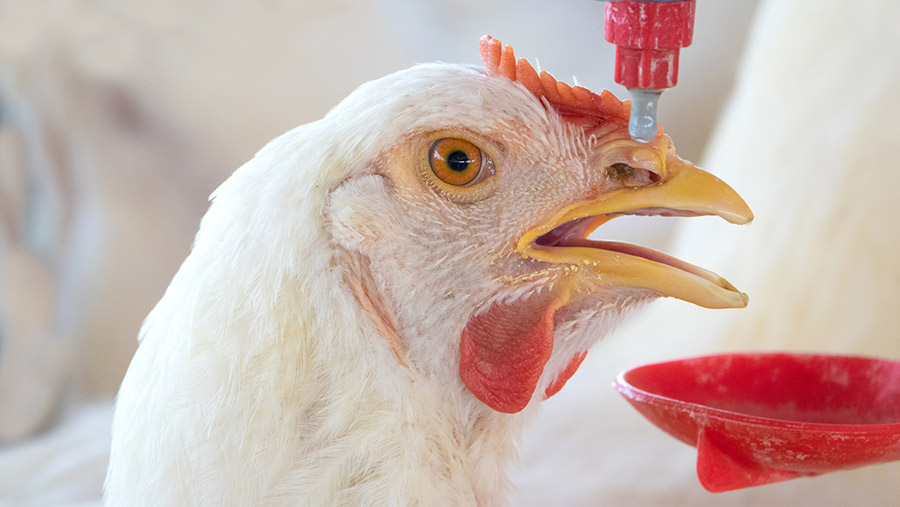Antibiotics use falls to new lows on British farms
 © Cratervalley/Adobe Stock
© Cratervalley/Adobe Stock UK livestock farms have cut their antibiotic use to an all-time low despite challenges from diseases like avian influenza and pressure on pig units from processing backlogs, new figures show.
The Veterinary Medicines Directorate (VMD) reports that sales of antibiotics for use in livestock have reduced by 55% since 2014; at 28.3mg/kg, it is the lowest level ever recorded.
See also: Antibiotics use far lower in organic livestock, survey finds
This has been achieved thanks to reductions in use in the pig, chicken, duck and trout sectors, according to the annual report from the UK-Veterinary Antibiotic Resistance and Sales Surveillance (UK-VARSS).
The UK is midway through the second cycle of targets first set by the Responsible Use of Medicine in Agriculture Alliance (Ruma) in 2017.
According to the latest progress report, published on Tuesday (8 November), the UK livestock industry is one of the lowest users of antimicrobials in livestock in Europe and has achieved one of the biggest reductions in resistance.
Key areas where good progress has been made
- The dairy sector has achieved a target of reducing use of lactating and dry cow tubes, to 0.51mg/kg and 0.54mg/kg respectively
- Sales of injectable highest priority antibiotics (HP-CIAs) in dairy, beef and calves have reduced by 18% since 2020; for these in tube form, sales have fallen by 96% since 2014
- A big uptake in disease vaccination in the sheep sector have helped it achieve targets, with a 12.6% increase in doses sold between 2011 and 2021
- Vaccination, coupled with heightened biosecurity as a result of avian influenza, was responsible for a significant drop in antibiotic use in laying hens
- For pigs, use of HP-CIAs remain very low at 0.03mg/ population-corrected unit (PCU), a reduction from 0.05mg/PCU in 2020, with zero use of colistin. Use of aminoglycoside, for treating infections like E.coli in piglets, increased marginally to 8.06mg/PCU in 2021, up from 7.89mg/PCU in 2020
- While in-feed medication remains more common in the pig sector, use is decreasing and accounted for 59% of annual use in 2021, down from 61% in 2020. In-water antibiotics now account for 37% of active ingredient used, compared with 34% in 2020
- A further decrease in antibiotic usage in broiler chickens has been recorded – now 13.66 mg/kg PCU which is well under the 25mg/PCU sector specific target
Ruma chair Cat McLaughlin, who also chairs Ruma Targets Task Force (TTF) 2, said she was “full of praise” for the work of UK agriculture in tackling antimicrobial resistance (AMR).
“The past two years since the launch of the second set of TTF targets have not been easy; the impacts of the global pandemic, the UK’s exit from the European Union, coupled with rising production costs, ongoing labour shortages, ongoing trade negotiations, supply chain issues contributing to animals remaining on farm longer than usual, and the onset of the cost-of-living crisis, has made for challenging conditions right across UK farming.
Yet the industry had remained “united and focused’’ on addressing AMR, she added.
Christine Middlemiss, the UK’s Chief Veterinary Officer, said progress on unnecessary use of antibiotics had been achieved with effective disease control measures, good farming practices and robust AMR surveillance.
